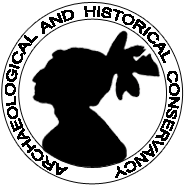Long Key/Sam Jones Seven Islands
The Archaeological and Historical Conservancy played an important role in the public acquisition of a unique group of remnant Everglades islands in Davie. These islands were known as Sam Jones Seven Islands during the Second Seminole War. The Pine Island Preserve, with the only first growth pines surviving in the County, was acquired by Broward County after AHC convinced the developer to not develop this valuable site. The Town of Davie acquired a second portion of Pine Island after AHC stopped the construction of Nob Hill Road that would have bulldozed a 300 foot wide swath through the ridge. The road was detoured and Broward County's earliest known prehistoric site was saved. Long Key, recently opened to the public, was acquired with Broward County using open space bond money. AHC played a major role in the developing the management plan in regard to its archaeological and historic sites, and designed the museum's exhibits. Once threatened, today these islands survive as archaeological and natural treasures.






